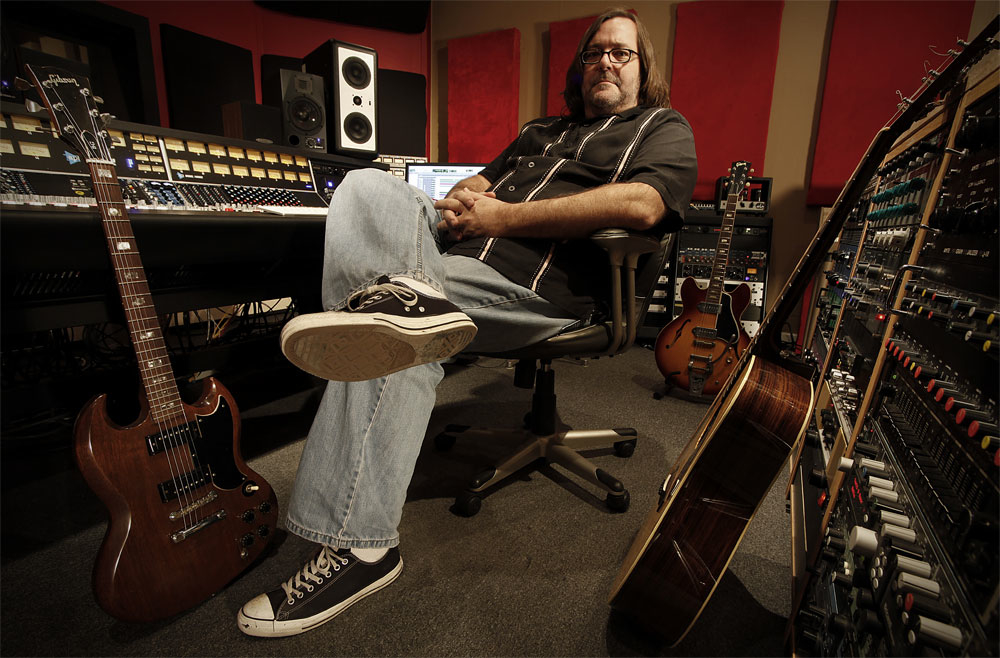— Yellow DOG studios standardizes its control rooms with Endless Analog’s CLASP® —
AUSTIN, TX, November 5, 2010 — Endless Analog’s CLASP® (Closed Loop Analog Signal Processor) system (booth 617), which uniquely integrates analog tape machines into the digital audio production workflow, has been so successful at yellow DOG studios in Austin, Texas, that producer and engineer David Percefull has installed a second unit. According to Percefull, the first CLASP unit has been in constant use since it was installed in Studio One earlier this year, ensuring that it would also take pride in placing a unit in the newly constructed Studio Three.
Percefull, who moved into the facility, formerly known as 5AM, with partners producer-musician Ed Robinson and singer-songwriter Steven Todd Hudson near the end of 2009, reports, “Everything that I record hits tape through CLASP and goes to Pro Tools. I thought initially I would use it on occasion, if the client wanted tape.” But as he quickly discovered while using CLASP at every available opportunity, “It’s a game-changer. I won’t do anything that doesn’t hit tape at this point.”
Soon after opening in spring 2010, the partners set about promoting the studio at South by Southwest, recording 23 artists over three days. “We laid it to tape, thinking that people would hear the difference and want to come here and record. It was wildly popular; everybody really loved our gear and the tone we were getting. A huge part of that is going to tape, but even more importantly the speed at which we were going to tape, and the availability to overdub and use different tape speeds within the same session – that was a huge deal.” CLASP’s proprietary SST® sample synchronization technology allows groups of tracks within a project to be recorded at tape speeds appropriate to their frequency content and transients.
Bookings started to come in and Studio One, the facility’s main tracking room, was soon also attracting mix projects. In planning Studio Three, the partners chose not to take the more traditional route of equipping a new mix room with a vintage console, different monitors, and so on. “We did things a little bit out of the box, so instead of doing that, we thought, why don’t we just mirror this control room? So we bought the exact same API 1608 console and set up a very similar monitoring scheme.”
With yellow DOG’s equipment complement now including both 16-track and 24-track MCI tape machines in addition to Pro Tools|HD2 with Apogee converters, a second CLASP unit was also a given. That makes a lot of financial sense, as Percefull explains: “The biggest impact has been in efficiency – I can get tones quicker. I go to mix and if stuff is recorded to tape it’s just very forgiving and everything sounds good, whereas in the digital world you suddenly have five EQs ganged up and you’re notching this out and doing that to try to achieve a sound that is immediate with analog tape.”
He continues, “Processing audio to tape inspired me to spend more time creating and shaping tone at the beginning of the recording process instead of keeping it safe and clean and dealing with at the end of the process, the way that I did when I was a kid cutting to analog tape. The sound of tape is much, much more musical and it’s inspiring to me.
Current projects at yellow DOG, all involving CLASP, include a new album by 97-year-old Pinetop Perkins, the last of the living Delta Bluesmen and one-time house pianist at Chess Records; iconic Texas singer/songwriter Brandon Jenkins, with whom Percefull has worked on seven previous albums; and Cody Canada’s first solo album with producer/engineer Adam Odor. “I’ve been recording with Brandon since ’96,” shares Percefull. “He got in here and started tracking some new stuff and was just blown away with the difference. That’s held true for many clients.”
CLASP fits perfectly into Percefull’s workflow, allowing him to spend more time on the creative process rather than fixing the audio: “I came up in the industry recording to tape; it was my only option. So it’s been great, because in my way of thinking it gets me to the end game much quicker — with much better results.”





